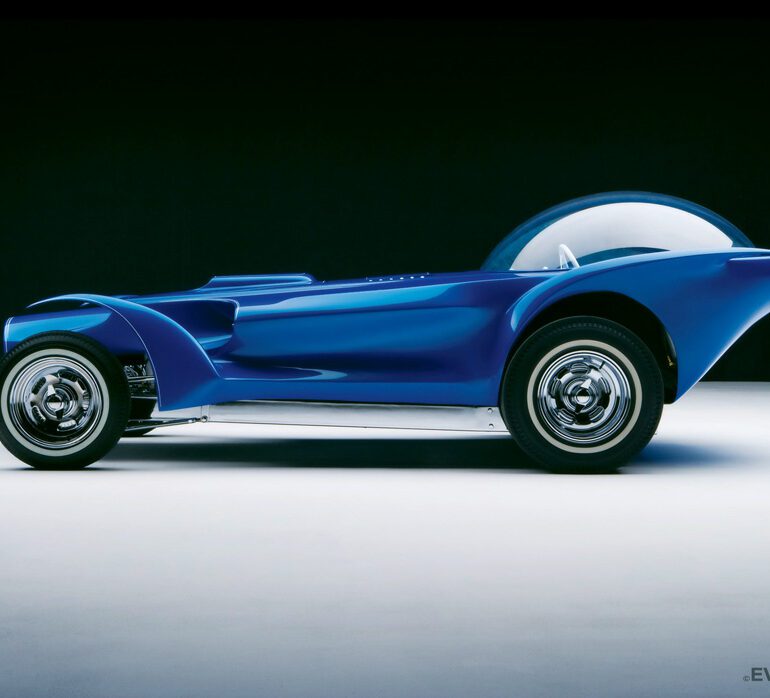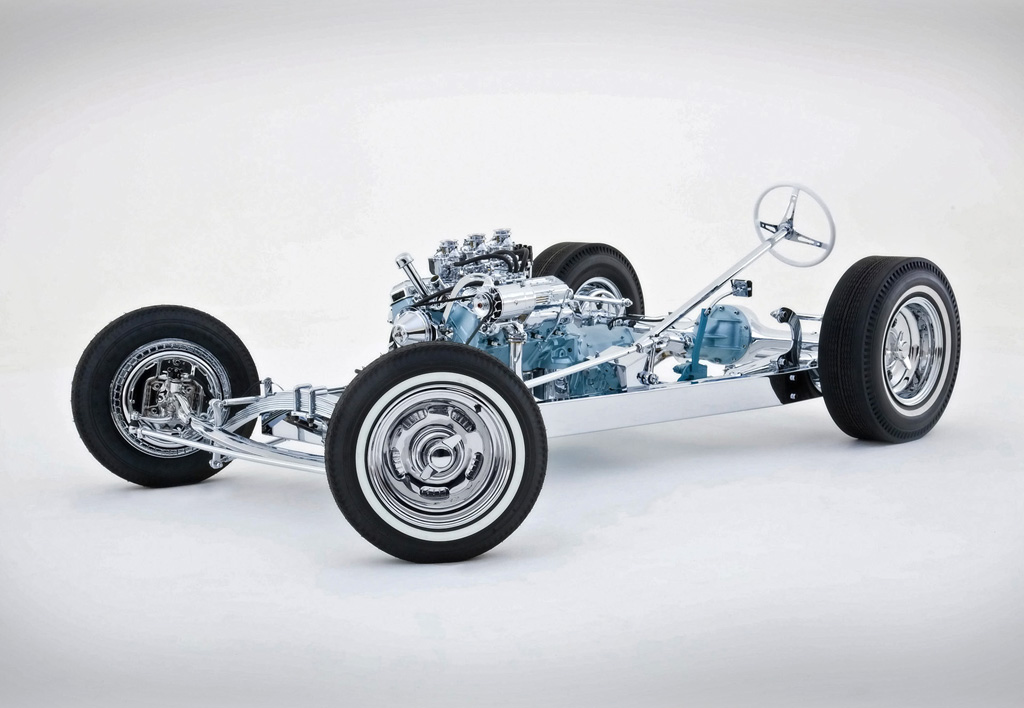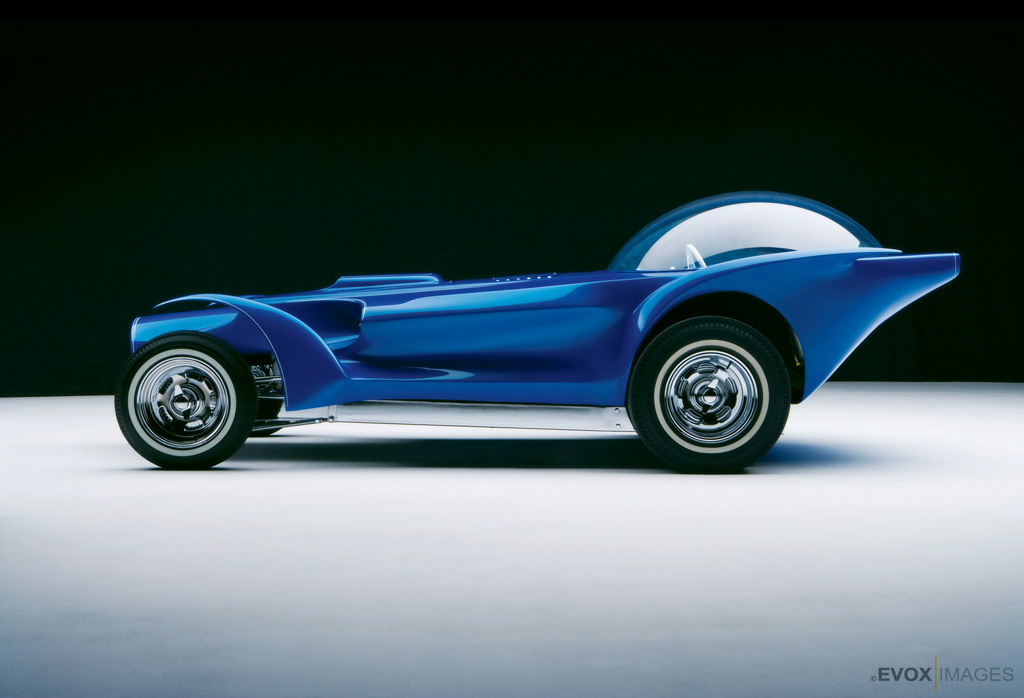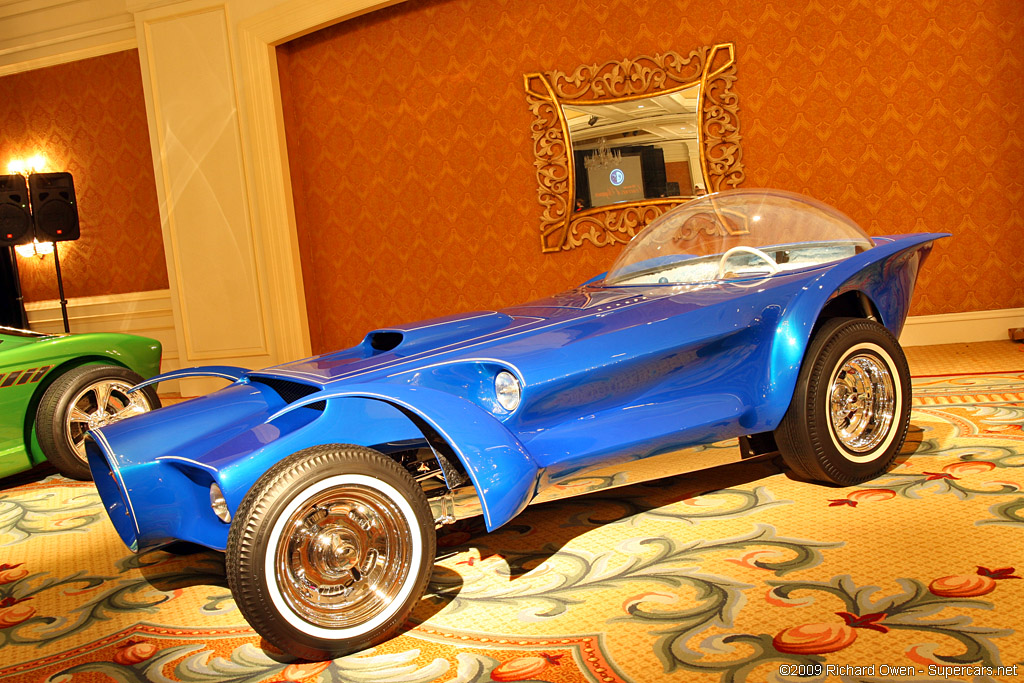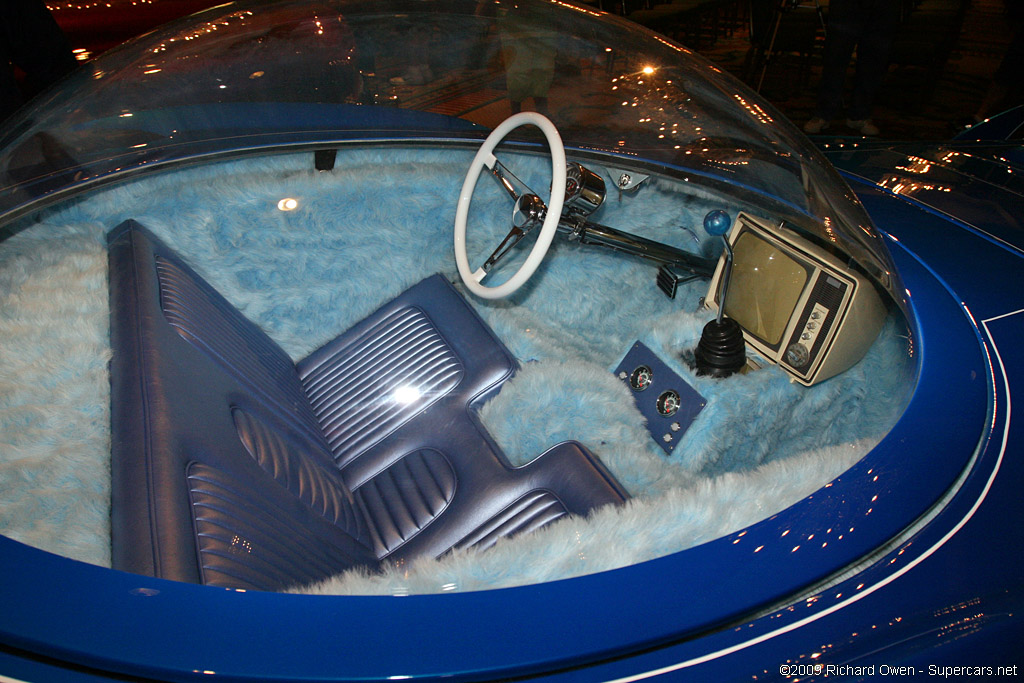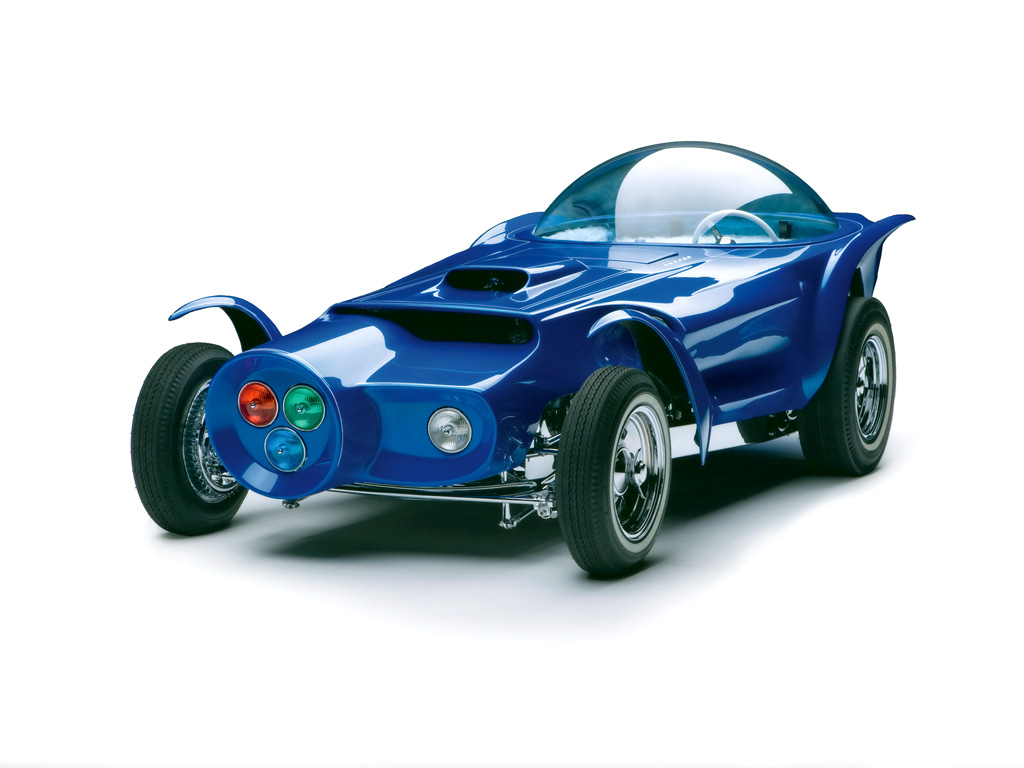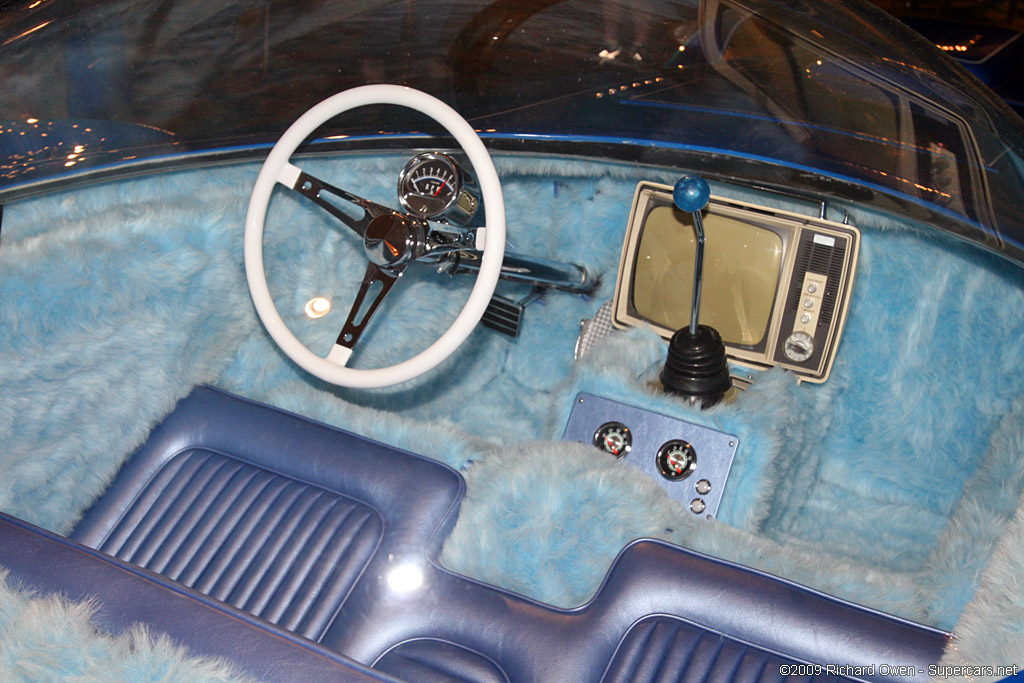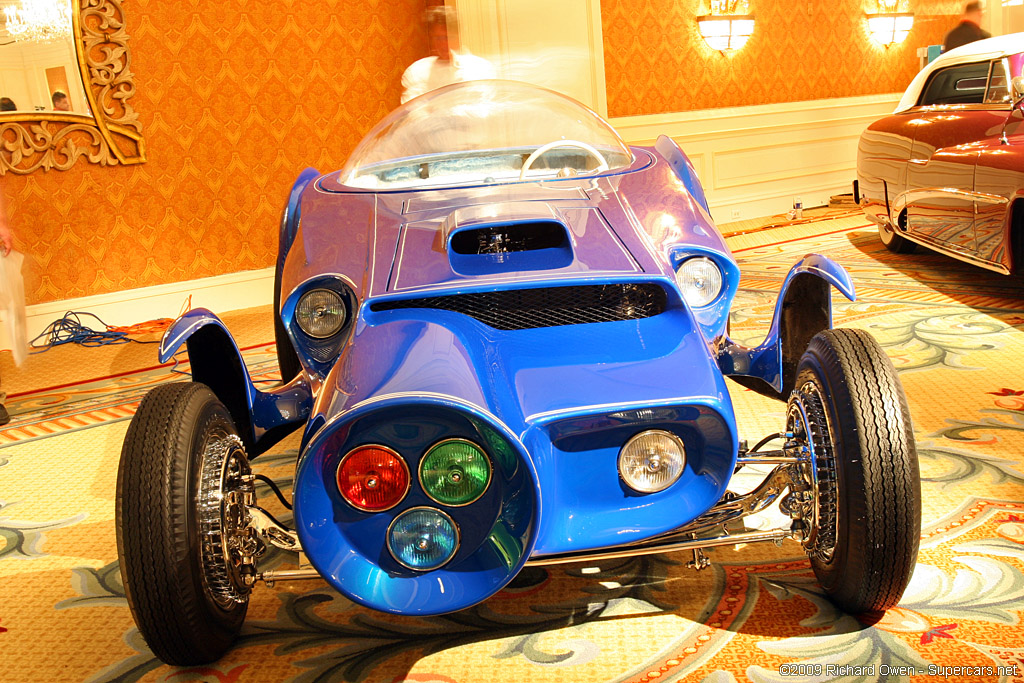1964 Orbitron
VAN NUYS, Calif. – A lost artifact from the pinnacle of the Custom era has been found, and what Hot Rod Magazine dubbed ‘the most incredible barn find ever’ is now in California for a complete and faithful restoration. Ed ‘Big Daddy’ Roth’s Orbitron, a far-out bubble-topped show car built in 1964 and lost shortly thereafter, was recently uncovered in northern Mexico, serving as a makeshift dumpster in front of an adult bookshop! Michael Lightbourn – nicknamed ‘the West Texas Scout’ for his ability to find abandoned automotive treasures – spotted and rescued the fiberglass-bodied hot rod, which is missing its original acrylic bubble top and front end but is otherwise fairly complete, down to the original engine, chrome Astro wheels and most of its bodywork.
Beau Boeckmann of Galpin Motors acquired the car shortly after its recovery from Mexico, and plans to completely restore the car to its original condition at Galpin Auto Sports (G.A.S.) with input from Roth experts and employees that were part of the original build.
“Being a huge fan of Big Daddy Roth, it’s a great privilege and honor, not only to own this car, but to bring it back to its former glory,” Boeckmann says. “Our goal is to make sure this piece of automotive history receives the accurate restoration it deserves.”
Once the car is restored to its former glory, Orbitron will join other Ed Roth cars in the Galpin Collection, including the Rotar (Roth Air Car) that was built in 1962 and actually hovered, the Globe Hopper three wheeled custom, The Great Speckled Bird chopper, as well as Roth’s daily driver Honda CVCC, which is covered in pinstriping and paint from his days as a sign painter at Knott’s Berry Farm. Other Galpin Kustom Kulture artifacts include a replica of Grandpa Munster’s Dragula, a ’52 Lincoln Lido built by George ‘King of the Kustomizers’ Barris, Kenneth ‘Von Dutch’ Howard’s 1970 Toad, hand-made Von Dutch art, tools and firearms, and an XK140 Jaguar that was customized by ‘the Da Vinci of the garage.’
Orbitron & It’s Creator
Ed ‘Big Daddy’ Roth was a founder of what later became known as the Kustom Kulture movement, starting off his career as a painter and hot rod builder in the 1950s and eventually creating world-famous characters like Rat Fink and wild show cars such as The Outlaw, The Beatnik Bandit, Mysterion, and Rotar. Working the show car circuit in the 1960s, Roth promoted his bubble-topped customs, sold airbrushed monster t-shirts and promoted Revell model car kits based on his own designs and creations. Over the years he worked with a variety of Kustom Kulture icons, including Robert Williams, Ed ‘Newt’ Newton (who drew the initial Orbitron sketches fresh out of Pasadena’s Art Center School) and Von Dutch when the two artists worked for the Brucker family’s Movie World theme park in the 1970s.
As a result, the man nicknamed ‘Big Daddy’ influenced nearly every niche of the car hobby, from traditional hot rod and custom builders to lowriders and Detroit designers. In fact, many credit Roth’s drawings and show cars as a key influence on the resurgence of ‘traditional’ hot rods that have regained popularity today. Roth passed away on April 4, 2001, but his use of bright hues, wild bodywork, outrageous monikers and over-the-top promotion has turned his original show cars into rolling art, and most have been snapped up and restored as icons of a highpoint in automotive design and expression. Roth’s cars and choppers are so famous in custom culture circles, they rarely changed hands over the four decades since the heyday of traveling custom car cavalcades and road shows.
Except for one. And this car wasn’t even considered one of his most successful, at least not by Roth himself. Built in 1964, Orbitron was designed to look like a slingshot dragster with ‘space age’ influences, as evidenced by the car’s raked stance and dragster slick rear tires. The nose incorporated a strange half-round/half-rectangular headlight housing that shone a white headlight on the rectangular side, and a set of red, green, and blue lights in the round side. In a play on the era’s latest electronic invention, the lights were intended to function like television tubes, which when illuminated together would create a strong white light beam.
Other key characteristics included Roth’s signature acrylic bubble top, flashy candy blue paint and an interior featuring fur carpeting and an actual color television. Under hood was a midship-mounted small-block Chevy engine wearing early finned Corvette valve covers and three chromed Stromberg 97 carburetors, backed by a Powerglide two-speed transmission. The asymmetric fiberglass and plywood body rode on a ’56 Chevy rear end and an early Ford dropped axle. Buick finned drums and early Ford brakes sat inside Astro slotted chrome wheels wearing single-groove Inglewood whitewall cheater slicks and Cal Custom fake knockoff caps.
Roth always regretted covering the engine: The fiberglass hood was raw inside, so it was kept closed, and the chromed and painted engine was never displayed. He also blamed the Beatles for the ‘failure’ of the Orbitron saying, “the Beatles appeared on The Ed Sullivan Show and all model sales stopped. Guys got guitars instead of cars.”
The Orbitron was recently showcased in the book Ed ‘Big Daddy’ Roth: His Life, Times, Cars and Art, by Pat Ganahl, including photography originally shot for a 1964 Car Craft Magazine cover feature. Ganahl describes the rise and fall of this iconic car, from its quick creation through its lengthy disappearance, as well as fully documenting the mythos of ‘Big Daddy’ with dozens of stunning full color photographs.
Originally Roth sold the car to fellow custom car builder and bubble-top king Darrell Starbird, who planned to use Orbitron in his own travelling car show. At this point the history starts to get a bit hazier – and crazier. According to Ganahl, after Starbird eventually sold the car it ended up in El Paso, Texas, where it changed hands a few times and may have been acquired by a lawyer that obtained it “in criminal case.” Stories vary about how the nose and bubble were removed. One version claims that the snout was removed to make the car look more like a T-Bucket roadster, another is that the nose was accidentally torn off when the owner attempted to tow the car by its bodywork. At one point it was driven daily by a high school student, who purportedly got trapped in the car on a hot summer day, forcing him to kick the bubble off.
All that is known for certain is that eventually two Mexican businessmen bought the car to use in a carnival, and it stayed South of the border for the next three decades. Eventually, the car ended up in Juarez, Mexico parked in front of a sex shop and being used as a dumpster. It remained there untouched until Lightbourn managed to strike a deal with the owner and proceeded to drag it back to the U.S. as customs agents laughed at the old jalopy on the trailer.
Ganahl’s story leaves off after the derelict car was brought back to Texas. Soon after, however, Galpin Auto Sports (G.A.S.) President Beau Boeckmann (through Roth friend and show promoter Moldy Marvin) contacted Lightbourn and made arrangements to acquire the car and bring it to Galpin for restoration. The G.A.S. crew is currently researching the car’s original configuration and collecting parts as it begins the restoration process. The nosepiece, hood and bubble are missing, as is most of the interior trim. The original paint has been covered in black primer, but the chassis appears almost entirely intact. Once restored, the car will be publicly unveiled in a ceremony showcasing Roth’s original creativity and raw talent.
Story by Galpin Auto Sports


